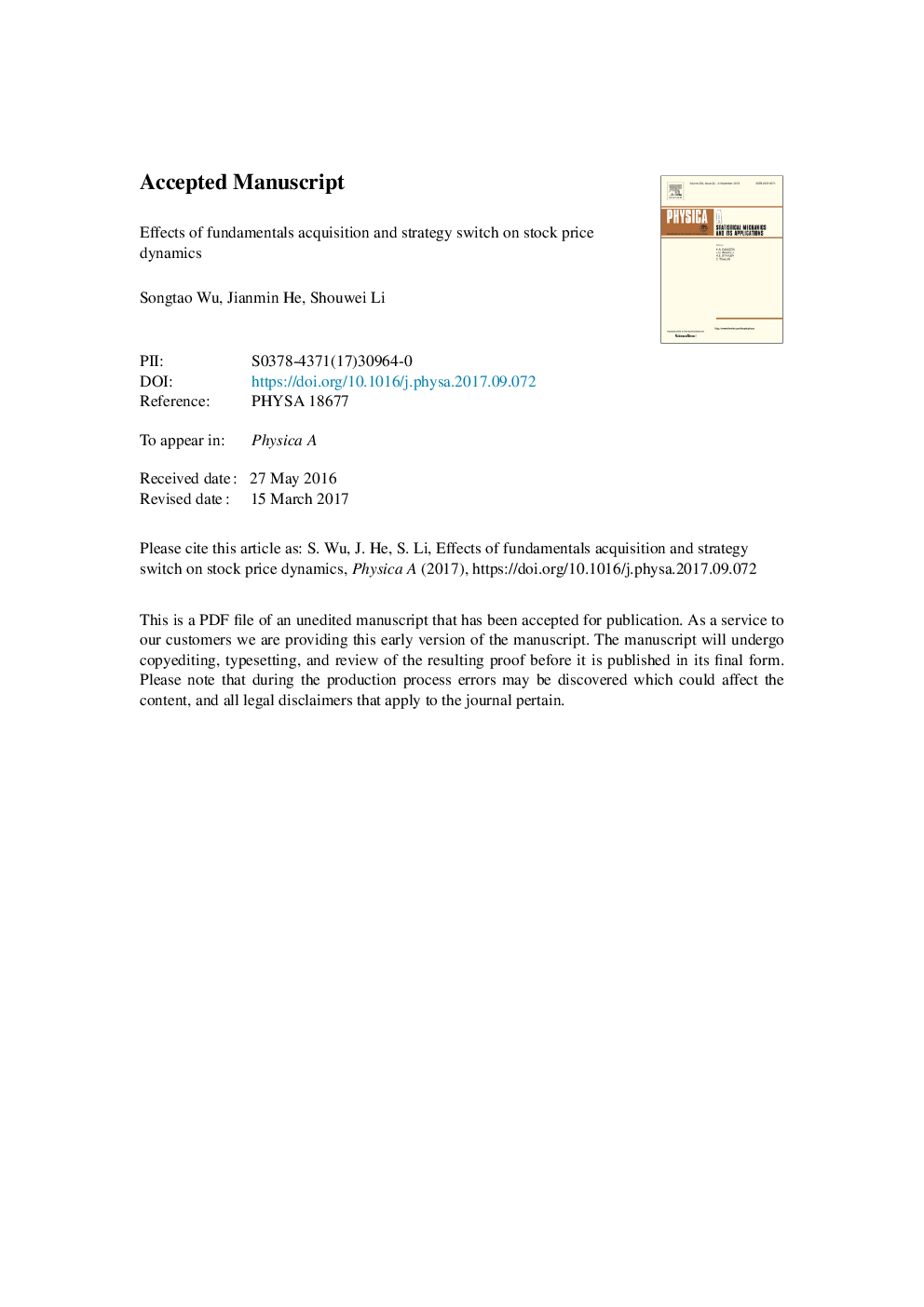| Article ID | Journal | Published Year | Pages | File Type |
|---|---|---|---|---|
| 7376649 | Physica A: Statistical Mechanics and its Applications | 2018 | 18 Pages |
Abstract
An agent-based artificial stock market is developed to simulate trading behavior of investors. In the market, acquisition and employment of information about fundamentals and strategy switch are investigated to explain stock price dynamics. Investors could obtain the information from both market and neighbors resided on their social networks. Depending on information status and performances of different strategies, an informed investor may switch to the strategy of fundamentalist. This in turn affects the information acquisition process, since fundamentalists are more inclined to search and spread the information than chartists. Further investigation into price dynamics generated from three typical networks, i.e. regular lattice, small-world network and random graph, are conducted after general relation between network structures and price dynamics is revealed. In each network, integrated effects of different combinations of information efficiency and switch intensity are investigated. Results have shown that, along with increasing switch intensity, market and social information efficiency play different roles in the formation of price distortion, standard deviation and kurtosis of returns.
Related Topics
Physical Sciences and Engineering
Mathematics
Mathematical Physics
Authors
Songtao Wu, Jianmin He, Shouwei Li,
